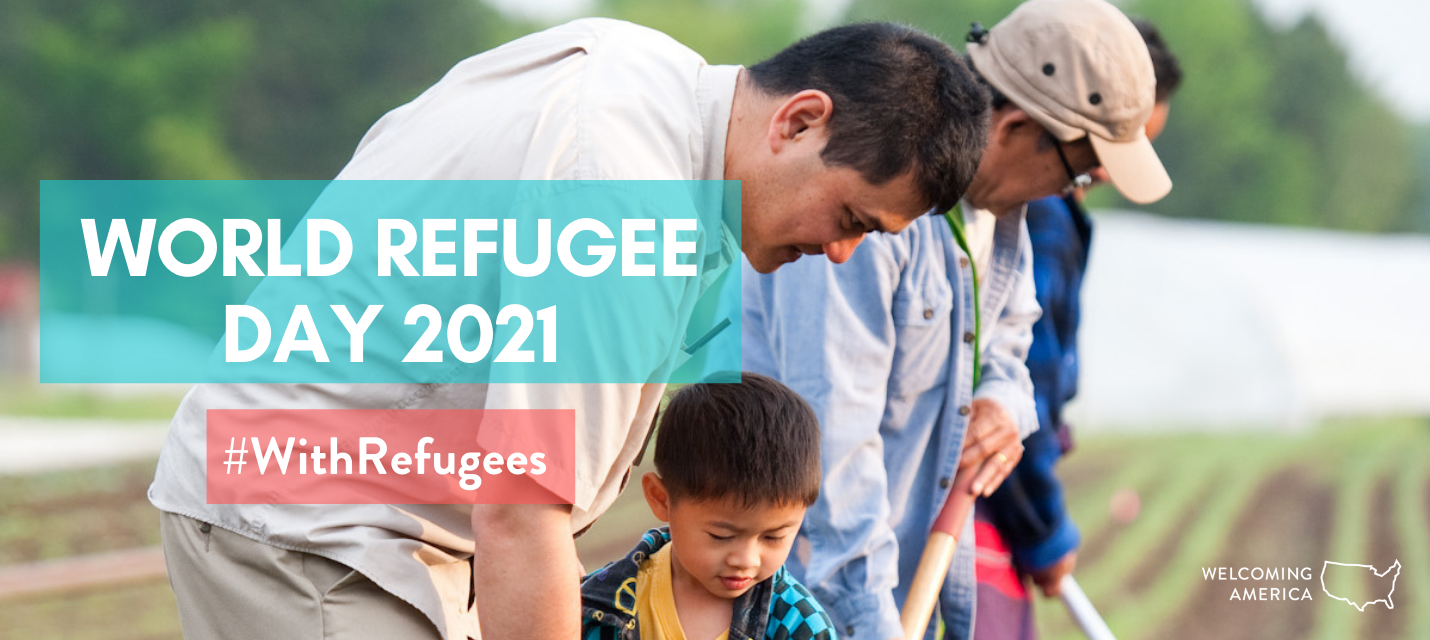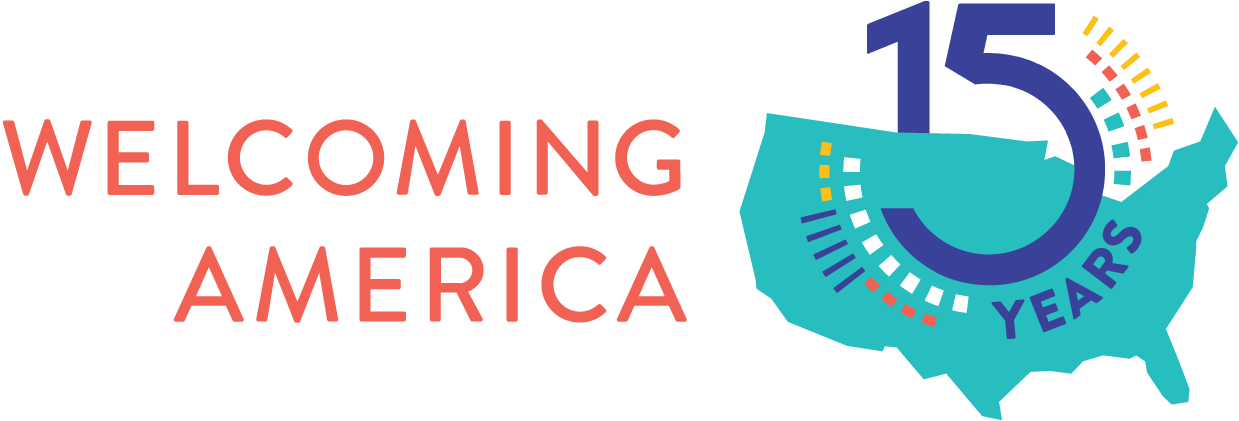
This World Refugee Day, learn something new about refugee resettlement
Today is World Refugee Day! First held by the United Nations in 2001, World Refugee Day honors refugees and “celebrates the strength and courage of people who have been forced to flee their home country to escape persecution” (UNHCR).
Welcoming America recently hosted a series of webinars with Boston University on refugee resettlement strategies to provide a broad understanding of how the resettlement system works in the United States, how it differs from other systems, and the challenges it has undergone over the past three years. Our Welcoming Network, which is composed of over 200 nonprofits and local governments, works on a variety of refugee inclusion and resettlement programs to foster more welcoming communities for residents of all backgrounds, identities, and perspectives.
Learn more about refugee resettlement through this conversation with Heba Gowayed, a Moorman-Simon Assistant Professor and Jake Watson, a Ph.D. candidate at Boston University.
How does refugee resettlement work?
Heba Gowayed: There’s three possible durable solutions the UNHCR (United Nations High Commissioner for Refugees) proposes for refugee displacement: (1) to go back to their country of origin, (2) to seek asylum, in which they take a very dangerous journey to a destination and apply for status, and (3) resettlement, in which they cannot apply to a specific country; they’re on a UNHCR roster and due to humanitarian need, they’re selected for the possibility of resettlement, vetted, and then after several years of vetting, offered the opportunity to travel.
Because we call them “durable solutions,” we typically think of this as an end. In some ways, it is a solution to the issue of displacement. However, it’s a beginning for folks who are in new countries as refugees, as immigrants, who experience several serious disjunctures, such as loss of linguistic fluency in majority language; new experience of ethnic, religious, and racial stigmatization; loss of family and social connections; and loss of human capital recognition (loss of recognition of skills or previous work experience).
How do the United States, Canada, and Germany differ in supporting refugees through their incorporation systems?
HG: Through a comparative study of the United States, Canady, and Germany–which are all economically advanced–we can start asking questions about our assumptions and the status quo, and really begin to reimagine the possibilities of what resettlement policy can look like in the United States.
The United States has a “self-sufficiency” system that aims for quick non-reliance on government assistance. Federal assistance is limited, and as a result of the dearth of support, resettlement agencies and local communities play an important role to fill the gap. Too often, refugees who arrive in this country experience the first couple of years of their life here as low income individuals.
Canada has an “integration” system which, as part of their multicultural immigration policy, aims for integration through language learning. Federal assistance is more expansive and they offer full support for the first year, disincentivizing labor market entry. There’s access to welfare after the first year and the Canadian system also has an option of private sponsorship.
Finally, Germany has a “credentialization” system, which aims for integrating refugees into the German labor market. It’s a super expansive social support system for as long as refugees need it, but they have to earn a credential within the German system in order to enter into the labor market. They can’t work when they get to Germany–it takes several years to achieve that level of skill. Therefore, the system is expansive, but support and residency is contingent on pursuit of language and there’s no recognition of previous experience.
How do subnational factors (ex. Levels of government, policy differences) create variations in resettlement in the United States?
Jake Watson: Once refugees have been selected and processed abroad, they’re allocated to a national voluntary organization, which works through a network of local affiliate organizations to place refugees across the United States. Once refugees arrive, local agencies are mandated to transition them to rapid economic self sufficiency, within 30-90 days. The federal government financially supports this by providing them with a single $2,075 payment per refugee with the overarching emphasis to transition refugees to economic self-sufficiency as soon as possible.
While resettlement is standardized at the federal level, it in fact looks quite different across the United States. There are many subnational factors, such as different levels of government, the local and regional context, and the resources available, that interact to create variations in resettlement policy. Analysts and policy analysts have argued that these differences constitute a “lottery effect,” where two families with otherwise identical profiles and characteristics will have very different experiences of resettlement depending on where they resettle and with which agency.
To learn more about refugee resettlement in the United States and abroad, you can find the full recording of the webinars here. Dr. Gowayed’s research derives from her forthcoming book Refuge: How the State Shapes Human Potential, to be published by Princeton University Press in Spring 2022.
Want to learn more about refugee resettlement? Start with these resources:
- UNHCR, “What is Resettlement?”
- U.S. Department of Health and Human Services, “About the U.S. Refugee Admissions Program”
- International Rescue Committee, “Refugees in America”
- Welcoming America, “Welcoming Refugees in Rural Communities”
- Find more Welcoming America resources on supporting refugees here

